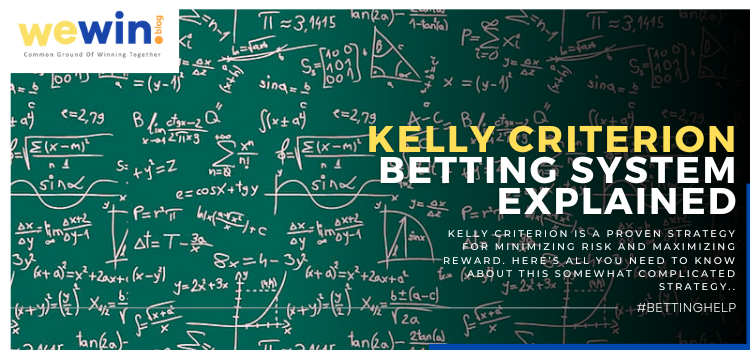Sometimes, straightforward strategies aren’t enough to get the results that punters want in sports betting. One of the systems that seasoned bettors turn to is the Kelly Criterion in cases like these. It’s a proven strategy for minimizing risk and maximizing reward. Here’s all you need to know about this somewhat complicated strategy.
Everything About The Kelly Criterion
The Kelly Criterion is a formula that bettors can use to determine the precise portion of their bankroll to bet on a given sports event. It’s a unique betting system as it factors in the amount of money you have to wager, and the expected return should take your bet pan out. Moving forward, it bears mentioning that the efficacy of this system is mainly dependent on the ability of a punter to assign the correct probabilities to the equation. Failing to do this will make the calculations of the equation askew, which will lead to erroneous results.
The Kelly Criterion Sports Betting Formula
A punter is expected to apply the equation below before making a wager when using this sports betting strategy.
(bp – q) / b = f
So that you can use this strategy correctly, you need to understand what each of the components in the equation represents.
- The component “b” represents what multiple of the stake you stand to win from making the wager.
- The element “p” means the probability of the bet you’re about to create winning.
- The component “q” represents the probability of the chance you’re about to make losing.
- The part “f” means the final value the equation gives you. It determines the fraction of your bankroll you’re supposed to stake on the match in question.
Using this formula, you can determine if you’re planning to have a positive expected value. That way, you know whether that match is worth taking on or not.
The Importance Of Positive Expected Value In The Kelly Criterion Strategy
Positive expected value is essential because it’s one of the subtle ways a bettor can find deals in sports betting. If you aren’t already aware, the phrase “positive expected value” is what’s used to refer to the probability that a given wager has a higher winning chance than its implied odds would suggest. Because of this, the Kelly Criterion only delivers the desired results when used in sports betting matches that give a positive expected value.
What To Remember
While this sports betting strategy delivers better results than most, you shouldn’t forget that it isn’t perfect. There are instances where the system would require you to wager massive amounts of your bankroll. In such instances, we suggest that you use the Kelly Criterion with a pinch of common sense. Avoid following the system blindly, as this can have less than ideal outcomes. We believe that so far, if you’re cautious with its use, you’ll be pleased with what you get from this betting strategy.
Statistics To Use With Kelly Criterion Betting System
| Statistics | Descriptions |
| Probability of Winning | Accurate probability estimates are essential to the Kelly Criterion formula, as they determine the optimal bet size. Examining a team or player’s win-loss record, recent form, and head-to-head record can help you to estimate the probability of winning and make more informed betting decisions. |
| Betting Market Odds | The Kelly Criterion formula takes into account the odds offered by the betting market, so examining these odds can help you to determine the potential payout and the potential risk of each bet. |
| Bankroll | The Kelly Criterion formula also takes into account your available funds, so it is important to consider your bankroll and whether you can afford to place the recommended bet size. |
| Expected Value | The Kelly Criterion formula seeks to maximize the expected value of each bet, which takes into account the probability of winning and the potential payout. Examining the expected value of each bet can help you to make more informed betting decisions. |
| Variance | The Kelly Criterion formula can help to balance risk and reward, but it is important to be aware of the potential for variance and short-term losses. Understanding variance can help you to manage your bankroll and avoid over-betting or under-betting. |

|

|

|

|

|

|
Frequently Asked Questions About Kelly Criterion Betting System





